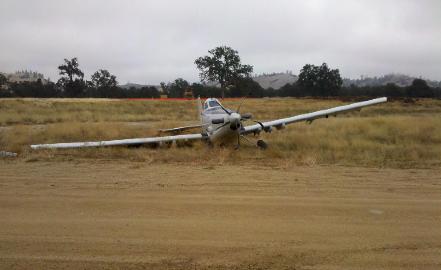A too-short landing at an Army reserve base in California caused substantial damage Air Tractor's AT-802U surveillance, precision strike and utility demonstrator aircraft on 21 October.
According to a National Transportation Safety Board (NTSB) report, a pilot and flight test engineer flying in the two-seat modified agricultural single at the time were testing maximum performance takeoffs and landings on the 1,829m (6,000ft) hard clay Schoonover runway at Fort Hunter Liggett California when the accident occurred. Neither was injured.
 |
|---|
©NTSB |
"The pilot was attempting a short field landing and had full flaps deployed," the accident report states. "Upon landing, the tail wheel of N4247U struck a berm of dirt at the west end of the strip. The berm of dirt was approximately 10-12ft tall. The nose pitched down and the prop struck the runway. The two front tires also struck the runway. The aircraft bounced back in the air. The pilot added power to avoid a stall and slow the rate of descent back on to the runway. The left wing dropped and the tip skidded along the runway."
The report goes on to say that the pilot had added full rudder to counteract the turn to the left, after which the right wing came down and the right main gear and tail wheel broke from the aircraft.
"The aircraft should have landed further down the strip," the report states in the "operator/owner safety recommendations" section.
Air Tractor design engineer Lee Jackson declined to comment on the accident, and whether the aircraft had been repaired or if there are other AT-802U models flying. Jackson is listed in the report as the passenger on the accident flight.
The company in July announced that it had launched production of the counter-insurgency aircraft to an undisclosed customer for missions after first revealing the design in 2009.
Marketing materials, which prominently feature N4247U, reveal that the AT-802U is designed to fly for 10h and carry munitions on 11 hard points under the wings and fuselage, including Gatling guns, Hellfire missiles, laser-guided rockets and laser-guided bombs.
Imagery from a partially retractable L-3 electro-optical/infrared sensor mounted under the nose can be used by the crew or downlinked to the ground.
Source: Flight International
















